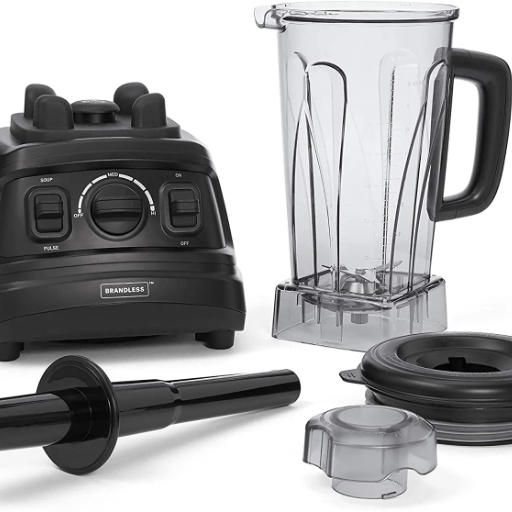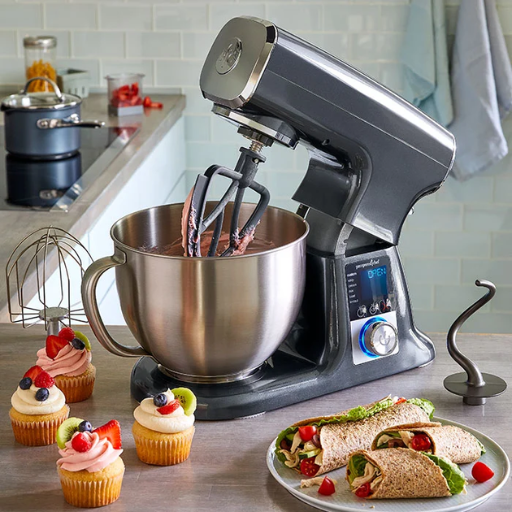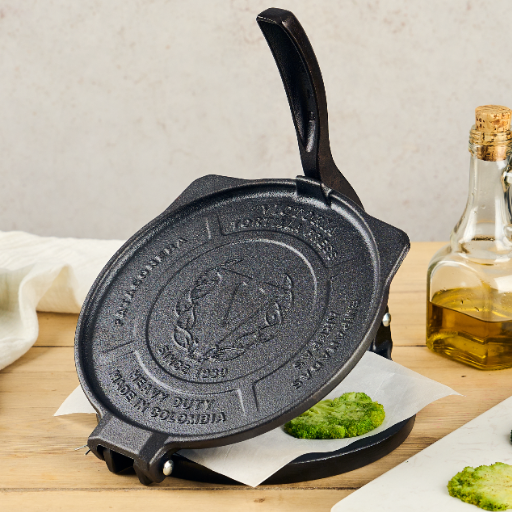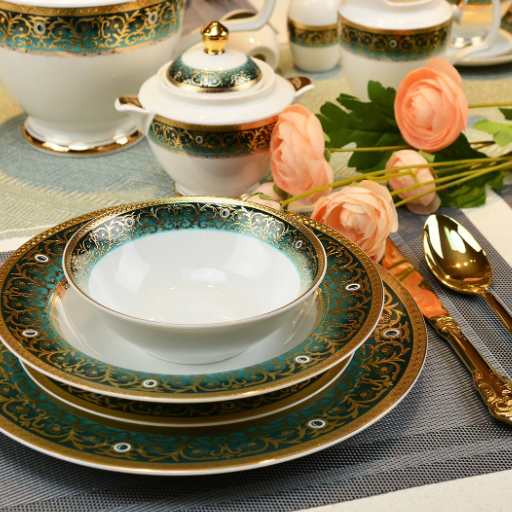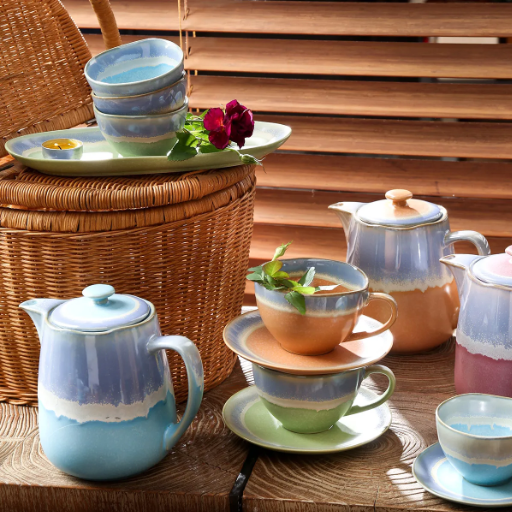For many, tea is more than a drink. It’s a sophisticated mix of culture, tradition, and even art. The teapot adds elegance and utility. It is indispensable into the tea enthusiast’s experience.
Are you looking to purchase wholesale teapots? Then you must be looking for a something that is stylish, practical, and durable and still reflects your choice. The purpose of this guide is to assist anyone looking to procure a tea set for a café, boutique collection, or simply wish to refine scouting rituals, with elegant and chic items. We shall go over everything to allow all your tea needs to marry with style. From quality material selection to the latest trendy designs, you shall explore everything to help you make the right choice which balances class and practicality.
What Are the Best Wholesale Teapots Available?
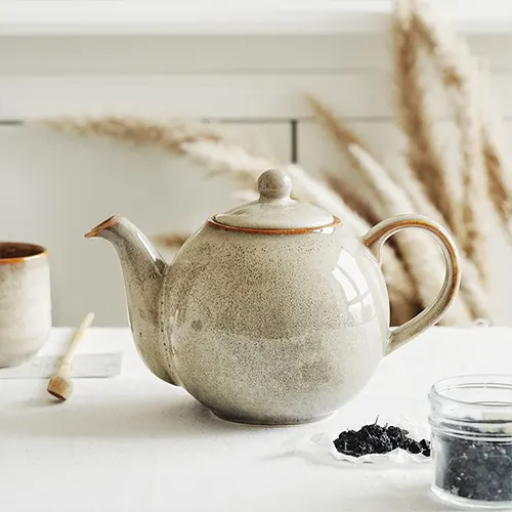
When buying teapots in bulk, it is important to consider quality, use, and adaptability. For commercial use, stainless steel teapots have a high durability and are heat-retentive. Glass teapots have a more modern look; borosilicate glass is very heat resistant and offers visibility during steeping. For a more traditional look, ceramic teapots still top the list as they retain heat very well and come in a large variety of artistic finishes. Well-known brands like Hario, Bonavita, and Forlife offer professional and personal grade teapots with a great balance between design and durability. While making your choice, think about capacity, ease of cleaning, and your intended use.
Top Brands for Porcelain Teapots
Porcelain teapots are valued for their wonderful timeless grace, ease of heat retention, and their surfaces which do not absorb flavors easily. Notable manufacturers in this category include Wedgwood, who is known for their intricate brand designs and high quality goods. Royal Albert offers a mix of traditional floral craftsmanship which makes them popular among collectors. Another name hold in high regards is Lenox, which merges modern production techniques with classic porcelain artistry to create teapots that are durable yet luxurious. All these brands are known to produce functioning items that can also be displayed as refined pieces of décor for the tea lovers and enthusiasts.
Where to Find High-Quality Ceramic Teapots
Many reputable retailers and specialty shops stock different styles of high-quality ceramic teapots. Bloomingdale’s and Macy’s usually have seasonal collections of Royal Albert and Lenox, as well as other premium brands. Online and brick-and-mortar specialty tea shops often feature artisanal-grade porcelain made by skilled potters known for their unique and functional designs.
Etsy and Amazon, as well as other online marketplaces, have a wider selection of modern and traditional ceramic teapots than any brick-and-mortar store. They also offer customer reviews that help evaluate the quality and usability of the products. Replacements, Ltd. Vintage stores and auctions are excellent for finding rare collectible porcelain teapots, buying them in bulk, or with other rare high-grade items for those seeking heirloom-grade teapots. Direct purchase from the manufacturers’ sites grant access to exclusive collections, and therefore, many brands such as Wedgwood and Villeroy & Boch which have their own official sites offering direct purchase from the source.
Choosing the Right Size for Your Tea Set
Understanding the intended purpose of the tea set and the number of guests to be served is important when determining the size. For solo drinkers or small gatherings, a compact set whose teapot is between 15 and 25 ounces is usually adequate. Larger sets intended for group or extended tea service use are better with teapots that hold from 40 to over 50 ounces. Look out for the sizes of the matching tea cups too. They are usually between 6 and 8 ounces. Remember to consider the organization and protective storage space needed as some larger sets would require more room to store everything orderly. Taking these considerations into account will enable you to purchase a tea set that is appropriately sized and efficient for your tasks.
How to Choose the Perfect Teapot for Your Needs?
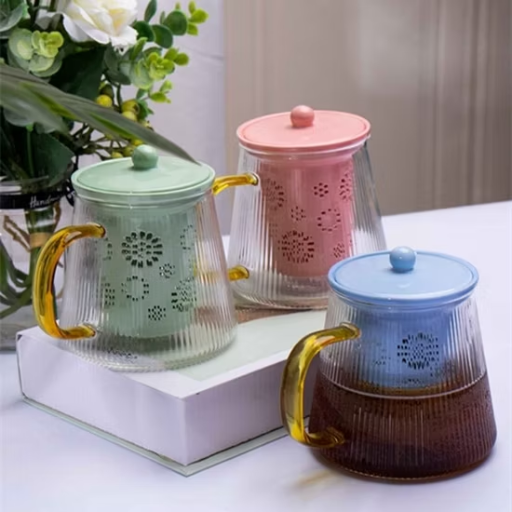
While selecting a teapot, it is recommended that you pay attention to the material, size, and functionality. First, some teapots serve better purposes in keeping the heat, such as ceramic ones. This means their usage warrants selection. As an alternative, glass ones help in appreciating the tea visually, making it easier to steep. Secondly, ensure the size is appropriate with respect the servings usually made. A smaller size is perfect when singularly used whereas in group settings, larger options are recommended. Lastly, a proper evaluation can be made by checking the spout’s diameter and or the lid’s fit to maintain the temperature for functionality. All these factors enable selection of a teapot that still meets the user’s needs.
Factors to Consider When Selecting a Teapot
- Material
The type of tea brought to the table necessitates the proper fitting utensils which includes checking the tea pot as a singular unit. Tough tea made out of strong leaves such as black tea or oolong demands cast iron teapots as they retain heat. Curing porcelain teapots ensures that delicate white and green tea are decanted with care. Some teapots for sale are glass, these are very appealing visually as both brewing as well as serving is enabled in transparency. On the other hand, traditional clay teapots allow for bracing tea infusion over several days, improving flavor over time. A delicate blend cooked in a tea pot made with clay will succeed sulfurous scents after a couple of weeks of usage, hereby embracing the name seasoning. The glass used to cur the teapots enhances aesthetically pleasing features while simultaneously keeping the focus on the bracing procedures performed.
- Capacity
Teapots are available in different sizes with small (12-14oz), ideal for serving one to mid-sized (40oz and over) used for serving multiple people. Maintaining the right capacity ensures optimized brewing without wastage. For daily solo use, smaller teapots are convenient to minimize leftover tea, while hosting groups would require a larger capacity model.
- Heat Retention
A good teapot should be able to keep tea hot for a long period. Some materials such as cast iron and clay keep heat which is beneficial in long tea sessions or with sensitive teas. For short brewing sessions, warmer brews, glass and porcelain work well.
- Ease of Cleaning
One of the criteria to evaluate the features of a teapot is hygiene, which should not be neglected. Hygiene is taken care of with thorough cleaning through wide openings which prevents residue buildup. Teapots that are safe to be put in dishwashers is particularly useful for routine teapots as it decreases the overall workload.
- Infuser or Strainer Integration
Modern infuser-less teapots are inconvenient because most do not brew loose-leaf tea, portraying a lack of thoughtfulness in design. For modernists, infusers made out of stainless steel are most popular as they do not stain and are odor resistant. Traditionalists are not as limited as modernists, as they can use a separate infuser during the flexible brewing process.
Comparing Different Materials: Ceramic vs. Porcelain
|
Key Point |
Ceramic |
Porcelain |
|---|---|---|
|
Durability |
Less durable, prone to chipping |
Highly durable, chip-resistant |
|
Heat Retention |
Excellent for maintaining heat |
Superior heat retention |
|
Weight |
Heavier than porcelain |
Lightweight |
|
Aesthetic Appeal |
Rustic, traditional appearance |
Elegant, refined finish |
|
Porosity |
Higher porosity |
Low porosity |
|
Stain Resistance |
Prone to staining |
Resists stains effectively |
|
Temperature Tolerance |
Sensitive to rapid temperature changes |
Tolerates rapid temperature changes |
|
Price Range |
Generally more affordable |
Often more expensive |
|
Cleaning Requirement |
May require special care |
Easier to clean |
|
Historical Use |
Common across cultures |
Preferred in finer tea traditions |
Design Styles: Traditional vs. Modern Teapots
|
Key Point |
Traditional Teapots |
Modern Teapots |
|---|---|---|
|
Material |
Ceramic or clay |
Glass, stainless steel, or plastics |
|
Aesthetic |
Ornate, handcrafted designs |
Minimalist, sleek appearances |
|
Functionality |
Retains heat well |
Focus on convenience and versatility |
|
Cultural Significance |
Rich cultural heritage |
Contemporary, globally popular |
|
Durability |
May be fragile |
Often more durable |
|
Heat Consistency |
Excellent for gradual brewing |
Supports quicker heat adjustments |
|
Usage |
Steeping traditional teas |
Suitable for a variety of brews |
|
Cleaning Ease |
Requires careful handwashing |
Dishwasher-safe in many cases |
|
Price Range |
Affordable to high based on design |
Wide range, often mid-tier prices |
|
Target Audience |
Tea traditionalists |
Busy, modern consumers |
What Is the Pricing for Wholesale Teapots?
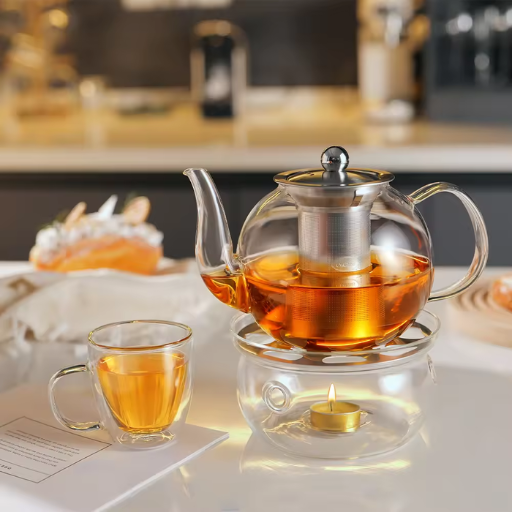
Wholesale prices differ for teapots based on their material, style, and quantity purchased. In bulk, plain glass and ceramic teapots sell between $5 and $15 each. Premium tier materials, such as hand-crafted cast iron, can increase the price to anywhere between $20 to $50 per piece. Many vendors offer unit purchase discounts that make the price per piece significantly lower for larger quantities.
Understanding the Cost of Different Teapot Styles
Porcelain teapots are noted for their beautiful shapes and the ability to retain heat, which places them as mid-range priced between $10 to $25 hypothetically, depending on the glazing and decor used. Practically designed and durable teapots made from stainless steel range from $15 to $30, depending on the demand for handles, screws, and insulation features. All the factors stipulated are directly tied to the price.
Evaluating every stage of the production process, an artisanal teapot is extremely functional while refined an elegant piece of artwork. It can be composed of yixing clay or hand-painted ceramics and due to its intricate design is priced at 100$ or above for their limited editions. Similarly to works of art, contemporary technology has also turned to creating new designs for teapots which include integrated infusers and temperature control components, thus raising their pricing. The high-tech models are usually priced at 35$, but in some cases can exceed 75$. The volatile pricing of raw materials combined with the infusing consumer desires for eco-friendly, sustainable goods that are aesthetically pleasing are bound to shape the set prices for this segment.
How to Get Discounts on Bulk Teapot Orders
Utilizing strategic methods of purchasing is imperative when trying to obtain discounts for bulk orders of teapots. One approach is to buy directly from manufacturers or wholesalers, since most of them have volume-based tier pricing. Negotiating favorable terms, such as offering to commit to a supply contract, can also reduce the average cost per unit. In addition, many suppliers have seasonal or clearance sales, which is something to take into consideration when making large orders. Platforms offering wholesale trade under subscription or membership models may be useful because of exclusive offers available to subscribers. Lastly, local suppliers should be prioritized not only because they reduce shipping costs, but also provide greater value through in-person negotiations or loyalty programs that could lead to additional discounts. Clear and consistent communication planning alongside understanding supplier policies aids in sustaining cost-effective negotiations for bulk orders over time.
How to Serve Tea with Your Teapot?
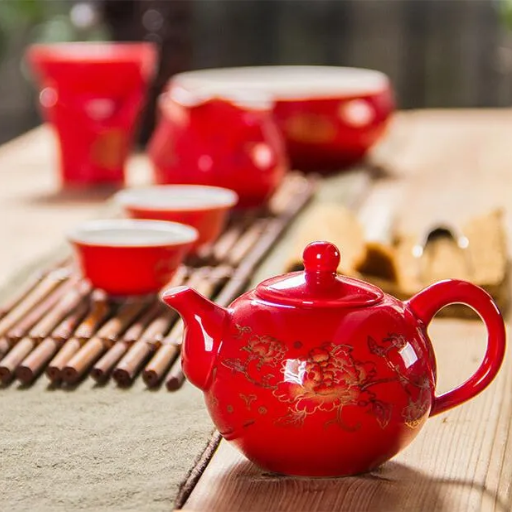
Serving tea with your teapot is almost effortless in regard to the different steps to take.
- Prepare the Teapot: Warm the teapot by rinsing it with hot water. To maintain brewing temperature, the tea will have to stand at the optimal temperature.
- Add Tea Leaves or Bags: Depending on the desire of the individual, there is a standard measurement of how much tea to be used. One standard measurement would be 1 tsp of loose tea or a tea bag would suffice for each cup of water.
- Heat the Water: Use fresh, cold water and boil it fully before use. For the first two episodes of steeping, green and white teas, allow a cooling period before the water is poured to avoid scorching the leaves.
- Pour and Steep: Over the tea in the teapot, hot water is poured. Depending on the tea type, covering the tea and steeping usually takes 3 to 5 minutes for most teas.
- Serve and Enjoy: Pour the tea into the cups and use a strainer to catch any loose leaves if necessary. For better presentation, offer milk, sugar, or lemon slices separately.
To serve a well-balanced set of tea, one needs to remember that it is an art piece but also the loose framework aimed at aiding the people who are drinking the tea.
Essential Accessories for a Complete Tea Set
A thorough guideline tea gives a person a holistic experience. preparation: outline of essential accessories that subtly act as supplements towards the immersion on serving and prep tea set :
- Teapot and Infuser: A quality matters and both infusers and steepers are crucial as they act as barriers to stop loose leaves from escaping during infusion. common pick would be stainless, aluminum, ceramic or even glass – tempered ones often have great aesthetics and sturdiness.
- Tea Tongs: Tea tongs often crafted from stainless steel these serve a lingerie’s purpose of daintily holding sugar or even tea bags without compromising hygiene.
- Tea Caddy: A caddy can protect tea bags from moisture. The tea caddy serves as a proper airtight container that guards the loose-leaf tea or tea bags from light, air, and humidity. Thus preserving the freshness and quality of the tea.
- Tea Towels: These are indispensable in the preparation of tea as they help to keep the area clean, dry, and tidy. Cotton and linen are recommended.
- Tea Strainers: Strainers ensure that during the steeping process, no solid tea leaves remain infused. A good tea strainer enables one to serve fine tea without any floating tea leaves.
Precision, comfort, and transforming every cup into a sip of sophistication comes with investing on the right accessories needed during the preparation and serving of tea.
Best Practices for Brewing Loose Tea in a Teapot
- Choose the Right Tea-to-Water Ratio: Use around 1 teaspoon of loose tea leaves for 8 US ounces of water, though this depends on the tea type. For example, lighter teas such as white and green would require less while oolong would require more than that.
- Measure Water Temperature Accurately: Different teas require their optimum temperature to brew. Green teas require water around 160-180°F while black teas brew well at 200-212°F and white teas need water of 170-185°F. A precision temperature control kettle solves the issue.
- Preheat the Teapot: It is advisable to do some preparatory work that involves the tea pot. So long as tea bracing is concerned preparing portions of warm water to cleanse the tea pot with aid of gently heating will go a long way ensuring the temperature stays high throughout the cuisson process.
- Steeping Time Control: Strictly observing the steeping time for each type of tea is best. Too long a steeping time is likely to introduce bitterness especially with black teas which should steep between 3-5 minutes, green teas between 2-3 minutes, and herbal infusions, which can go up to 7 minutes.
Carefully following documented procedures results in every stage of the tea making process working together to create a tea that is balanced in flavor and unique to the tea leaves selected.
What Are the Benefits of Using a Wholesale Teapot?

Employing a wholesale teapot has multiple benefits, especially for those in the hospitality or retail sectors. To begin with, the cost benefits stemming from bulk purchases is ideal for high volume businesses as the unit cost of individual teapots decreases. Furthermore, a customer’s needs and presentation are easily met by different styles and sizes which enhance a business’s overall aesthetics. In addition, maintaining durability and reliability from trusted wholesale suppliers stems from their use of high-quality materials, thus boosting long-term usefulness. For all tea-service centered businesses, such establishments focusing on operational efficiency, consistency and speed without sacrificing quality find wholesale teapots an instantly appealing and economical solution.
Enhancing Your Tea Experience with the Right Teapot
Reaching the optimal experience when brewing tea requires assessing several key considerations. Along with everything else, the composition of the materials is vital, as different glasses, porcelain, or cast iron have varied impacts on preserving the flavor and enduring heat. For example, glass teapots allow people to appreciate the infusion process and view it, while porcelain teapots work with everybody’s favorite making them suited for any tea variety. Moreover, cast iron teapots help with better heat distribution ensuring tea remains warm for a longer duration and it greatly enhances heat retention too.
Using a teapot that features a specific spout and a comfortable handle increases the precision of pouring and improves comfort. Over and under preparation when serving single or group portions can also be managed by ensuring the teapot size corresponds with the intended use. In modern teapots, temperature indicators and infuser baskets have capabilities of maintaining high quality tea while simple to high advanced brewing. While these features and factors are of concern for service establishments, they are equally important for tea enthusiasts because they change the practicality and enjoyment of every cup positively.
Building a Collection of Teapots: Why It Matters
An eclectic assortment of teapots is essential for tea lovers and people in the hospitality industry as it possesses both practical and aesthetic value. As tea has different types, different teapots are made in order to brew the tea properly. For instance, porcelain, clay, and cast iron have different temperature control capabilities and affect flavor extraction differently. One well-known example is the Yixing clay teapot which is famous for the porous nature of the clay which soaks in the essence of the teas. Because of this quality, the tea enhances the subsequent brews. Furthermore, a well-thought-out collection aids in hosting, as certain teas can be complemented with vessels that steep the tea in the ideal temperature and conditions. In addition to utility, the collection showcases culture and artistry, with several being handmade or designed, which makes them eye-catching or numerous pieces to be displayed. A curated collection enables enhanced experience of drinking tea while serving as a reminder of the harmony between utility and artistry throughout time.
Reference Sources
-
Guide to Wholesale Teapots: Discusses price ranges and options for wholesale teapots, including ceramic tea sets. Read more here.
-
Teapots Wholesale by Wurm: Offers a variety of teapots in different colors and materials. Explore here.
-
Teapots, Cups, and Sets: Features glass, ceramic, and miniature wholesale teapots with various designs. Check it out here.
-
Wholesale Teapots for Your Store: A platform to discover wholesale teapots and other decorative items. Visit here.
Frequently Asked Questions (FAQs)
Q: What types of products are available in a selection of teapots?
A: The selection of teapots typically includes various styles such as traditional bone china pots, colorful ceramic options, and modern black or white designs. You can find teapots suitable for both casual tea time and elegant restaurant service.
Q: Are bone china teapots a good choice for serving English tea?
A: Yes, bone china teapots are an excellent choice for serving English tea as they retain heat well and have a classic, beautiful appearance that enhances the tea-drinking experience.
Q: How can I select the right teapot for my tea time?
A: When selecting a teapot, consider factors such as the size (to accommodate your guests), the material (like bone china for elegance or ceramic for durability), and the design that complements your table setting and personal style.
Q: Do you offer a selection of teapots in different colors?
A: Yes, we offer a wide selection of teapots in different colors, including vibrant shades as well as classic black and white options, allowing you to choose the perfect pot for your decor and style.
Q: What is the difference between a teapot and a teacup or mug?
A: A teapot is designed specifically for brewing and serving tea, while a teacup or mug is used for drinking. Teapots often come with a matching saucer and are larger in size, while cups and mugs are smaller and meant for individual servings.
Q: Can I use colorful teapots for formal dining settings?
A: While colorful teapots can add a fun touch to casual gatherings, they can also be used in formal dining settings if they complement the overall table design. Consider matching them with elegant china or other stylish serving ware.
Q: Are your teapots suitable for commercial use in restaurants?
A: Yes, our teapots are available in durable materials and stylish designs that are suitable for both home use and commercial settings such as restaurants, ensuring a beautiful tea service for your patrons.
Q: How do I care for my bone china teapots?
A: To care for your bone china teapots, hand wash them with mild detergent and a soft cloth rather than using a dishwasher, as this will help preserve their beautiful finish and prevent chipping.
Q: What makes your selection of teapots unique?
A: Our selection of teapots is unique due to the variety of designs that blend traditional craftsmanship with contemporary aesthetics, ensuring you find beautiful and stylish options that stand out in any tea time setting.

